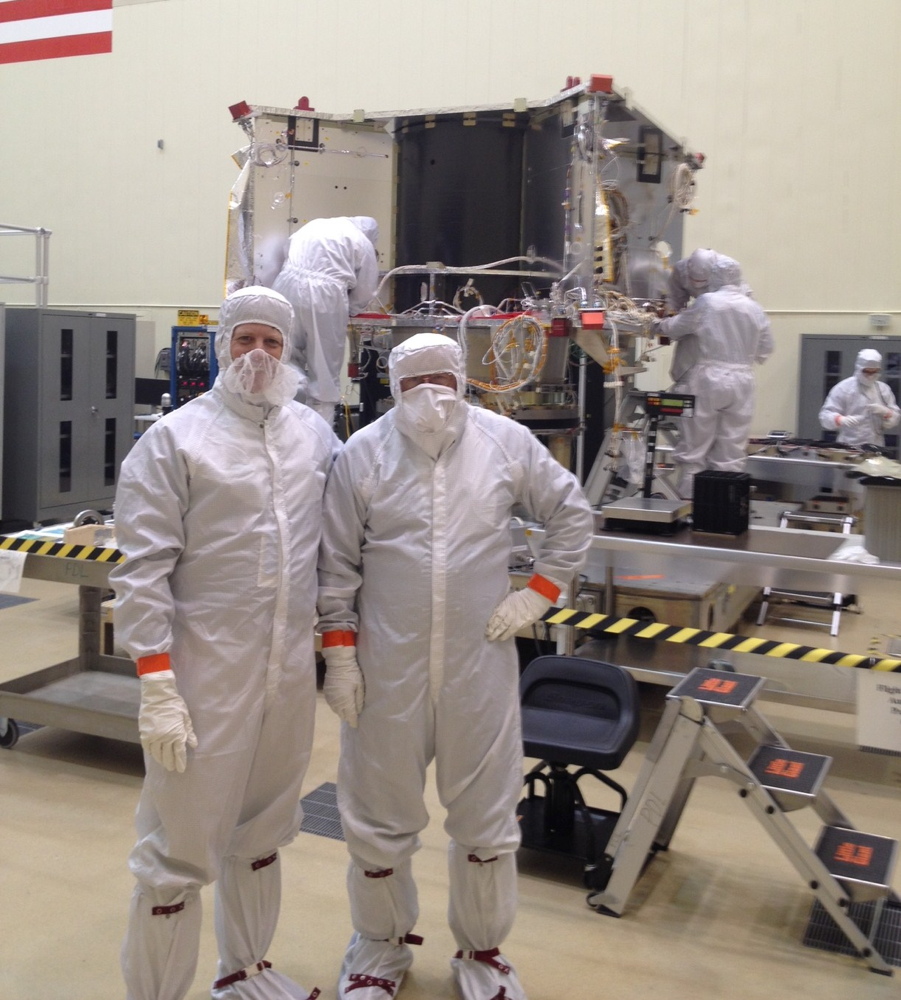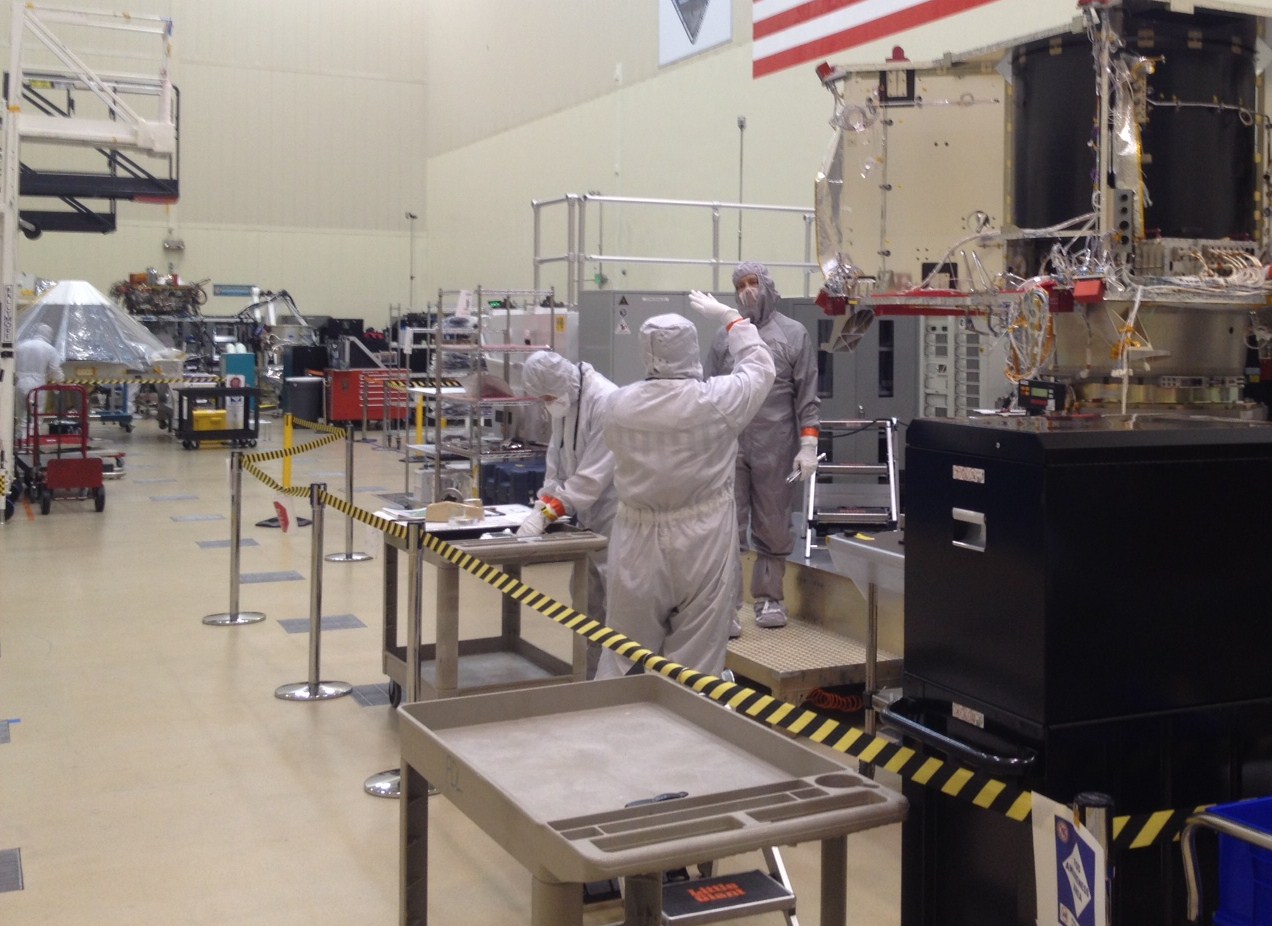
A Reporter's View: NASA's OSIRIS-REx Asteroid Mission Taking Shape

DENVER, Colorado – A fact-filled and incredible day at Lockheed Martin on April 6, visiting ultra-clean room facilities in which NASA's OSIRIS-REx spacecraft is coming together for a September 2016 liftoff.
The Origins, Spectral Interpretation, Resource Identification, Security, Regolith Explorer (OSIRIS-REx) probe is headed for asteroid Bennu, a carbon-rich body that could hold clues to the origin of the solar system and host organic molecules that may have seeded life on Earth.
The spacecraft will collect and return samples of the asteroid, returning the specimens gathered back to Earth for detailed analysis. [NASA's OSIRIS-REx Asteroid Mission in Pictures]
Lofted spaceward next year, the probe will reach asteroid Bennu in 2018 and return a sample to Earth in 2023.
Bunny suited
In protective garb, this reporter saw assembly, test and launch operations (ATLO) phase technicians hard at work in a critical stage of the program.

Over the next several months, spacecraft handlers will install on the OSIRIS-REx structure its many subsystems, including avionics, power, telecomm, mechanisms, thermal systems, and guidance, navigation and control.
Once the spacecraft has been fully assembled, it will undergo rigorous environmental testing this fall.
Get the Space.com Newsletter
Breaking space news, the latest updates on rocket launches, skywatching events and more!
My time at Lockheed Martin on April 6 also included a one-on-one interview with Rich Kuhns, OSIRIS-REx program manager at Lockheed Martin Space Systems. More details to follow in an exclusive story on the asteroid mission.
Lockheed Martin is building the spacecraft and will provide spacecraft mission operations.
OSIRIS-REx is the third mission in NASA's New Frontiers Program. NASA's Marshall Space Flight Center in Huntsville, Alabama, manages New Frontiers for the agency's Science Mission Directorate in Washington.
NASA's Goddard Space Flight Center in Greenbelt, Maryland, will provide overall mission management, systems engineering, and safety and mission assurance for OSIRIS-REx.
Special thanks to Lockheed Martin's Gary Napier for the inside view!
Leonard David has been reporting on the space industry for more than five decades. He is former director of research for the National Commission on Space and is co-author of Buzz Aldrin's 2013 book "Mission to Mars – My Vision for Space Exploration," published by National Geographic, with a new updated paperback version to be released in May. Follow us @Spacedotcom, Facebook and Google+. Published on Space.com.
Join our Space Forums to keep talking space on the latest missions, night sky and more! And if you have a news tip, correction or comment, let us know at: community@space.com.

Leonard David is an award-winning space journalist who has been reporting on space activities for more than 50 years. Currently writing as Space.com's Space Insider Columnist among his other projects, Leonard has authored numerous books on space exploration, Mars missions and more, with his latest being "Moon Rush: The New Space Race" published in 2019 by National Geographic. He also wrote "Mars: Our Future on the Red Planet" released in 2016 by National Geographic. Leonard has served as a correspondent for SpaceNews, Scientific American and Aerospace America for the AIAA. He has received many awards, including the first Ordway Award for Sustained Excellence in Spaceflight History in 2015 at the AAS Wernher von Braun Memorial Symposium. You can find out Leonard's latest project at his website and on Twitter.









